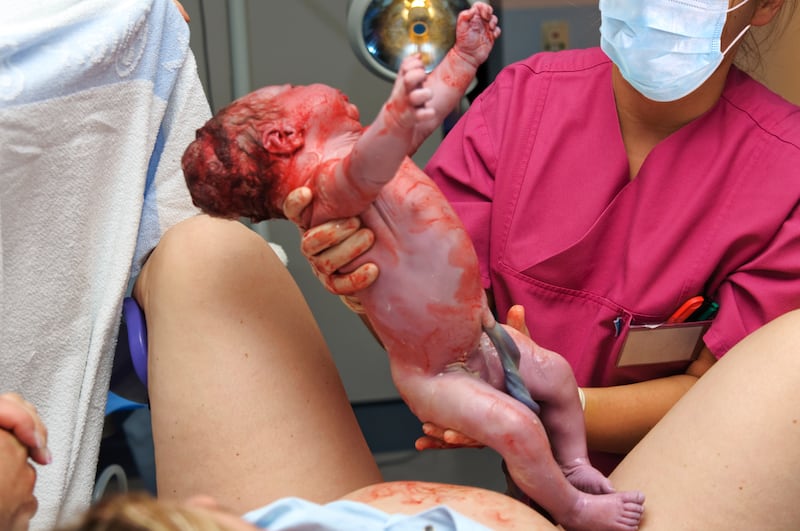At the end of 2017, Katie Vigos, a Los Angeles-based nurse, launched a petition to allow uncensored photographs of childbirth on Instagram.
Since she started her Empowered Birth Project page in 2014, her follower count has grown to almost 300,000, but the images of the process she seeks to celebrate, educate and inform women about – and help them heal from – are often removed by Instagram. Categorised as offensive material alongside pornography, threats of violence and hate speech, multiple images of childbirth have also been removed from smaller, similar accounts.
“The female body in the midst of giving birth – blood, pubic hair, buttocks, the image of a baby exiting a woman’s vagina – seems to trigger people to report images,” says Vigos. “But there is no reason why we shouldn’t be able to show photos of physiological birth. It’s straight-up censorship.”

Medical workers, for example, are allowed to post extremely graphic photos on Instagram, and womens’ bodies can be shown in explicitly sexual ways. But giving birth is deemed too unpleasant – even with Vigos’s proposal that the image is blurred, with an option to click through to see it, her concession to the idea that not everyone wants to see this type of content in their feed.
We don't allow nudity on Instagram
The problem, she has been told, is a zero-tolerance policy towards genitals, regardless of context. Instagram’s community guidelines state: “We don’t allow nudity on Instagram. This includes photos, videos and some digitally created content that show sexual intercourse, genitals and close-ups of fully nude buttocks.”
So, as Vigos sees it, “they’re saying because genitals are involved in childbirth [this type of image] belongs in pornography”.
She says this comes from a social belief that the female body is only desirable and acceptable in a certain state, that vaginas are “only okay when they’re clean, tight and hairless”.
Not only is this backward-thinking, she says, it is also harmful, and upholds the taboo and stigma surrounding birth. “It’s sending a message to women that your power to give birth is offensive and obscene, and should be hidden.”
Vigos’s aim is to normalise childbirth and teach people what happens to their bodies, in the absence of routine education about the process and accurate portrayals in culture. Without adequate knowledge, she says, women aren’t capable of making informed decisions in the birth room, or trusting their bodies: “People can’t conceptualise a vagina opening for a baby to pass through, and that leads to fear and tension during labour, which inhibits the birth process.”
The impetus for the campaign was a series of photographs of postpartum doula, Lauren Archer, giving birth to her son, Silas, which were taken by her father. First, Archer posted a photo on her own page, which was taken down by Instagram. "I had such an ashamed and saddened feeling," she says. "As a woman, when someone censors you, there is this flicker of shame, this feeling of regret, like: 'I must have done something inappropriate,' even though I had nothing to be ashamed of."
Vigos saw the photos and published them on her account. It was the most liked post in her page's history. Soon after, though, it was removed. Enough is enough, she thought, so she started the petition campaign on change.org.
Within a week, it had 15,000 signatures. It now has more than 21,000.
Archer says images are an important tool. “As a mother or a mother to be, seeing photos of the raw strength and power of your body is utterly empowering. Birth is scary but only because our society has shrouded it in mystery and shame. Allowing uncensored photos pulls back that curtain.”
Vigos compares the fight to uncensor birth with recent efforts to destigmatise menstruation and breastfeeding, and wonders if it would have been popular a few years ago, before those recent shifts in perspective.
“Birth censorship needs to end right now,” she says. “People are hungry for it.” – Guardian










